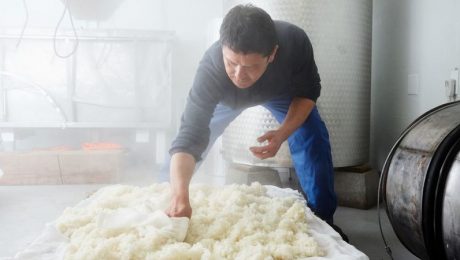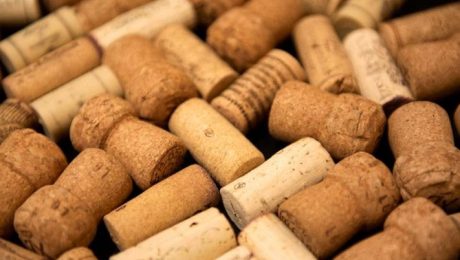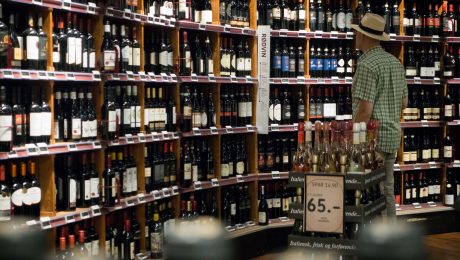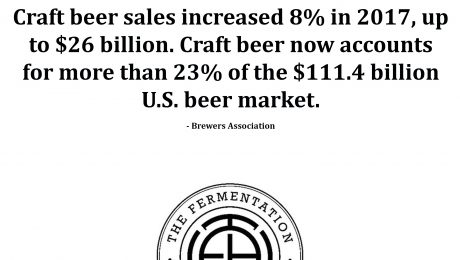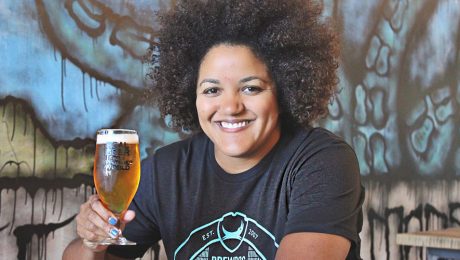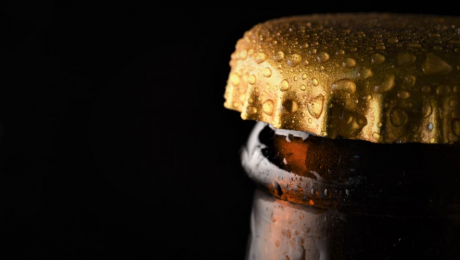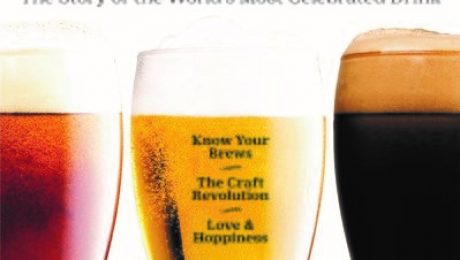Fermentation Reigns: Sour Taking Over Our Tastebuds
Sour is taking over our taste buds. A New York Times Style Magazine article explores how sour flavor is “dominating our dining discourse.” The article lists fermenting, kombucha, sourdough, kimchi, drinking vinegar, cocktail shrubs and sour beer as evidence of sour’s ascent in American’s palates. Samin Nosrat, author of the book of cohost of the Netflix series both titled “Salt, Fat, Acid, Heat,” says acid is one of the building blocks of flavor and makes our mouth water. “...your body gets confused — maybe I want more?”
Read more (New York Times Style Magazine)
- Published in Food & Flavor
Intricacies of Sake Maker’s Craft Featured in LA Times
In wine making, the grape is the critical element. The majority of the wine’s characteristics come from the grape. “But for sake making, it’s a little bit different. It’s more about technique, about people controlling the process,” says Yoshihiro Sako of Den Sake Brewery in California. Sako was featured in the Los Angeles Times Rice does not include natural sugars like grapes, so a sake brewer must add koji (a specialized fungus) to convert the rice’s starch into glucose, which then gets fermented into alcohol. Sako says weather conditions, too, can affect the flavor. His latest batches — made after the recent California rains — taste different than batches made during the change. Sako says it’s a way sake “expresses the locality.”
Read more (Los Angeles Times)
- Published in Food & Flavor
Japanese Sake Sales Surging as More Americans Enjoy the Rice Wine
Sake is sliding from the sushi bar to the dinner table. The Japanese sake industry is exporting more of the popular rice wine to America than ever before. More sake brands are putting English descriptions on their labels, which has surged sales growth. Kristin Breshears, a Certified Sake Professional and distributor for Vine Connections, says most Americans drink sake hot, served in a small ceramic cup along with sushi or dropped in a beer. Breshears, though, says sake is “a really beautiful beverage that should be served chilled and hopefully out of a wine glass so you can smell the aromas.”
Read more (New Orleans Gambit)
- Published in Business
More Wine Brands Getting Rid of Cork-Topped Bottles
Could a cork-topped wine bottle become a thing of the past? Use of cork closures are down compared to 10 years ago as more brands opt for alternative closures. But bottle closures influence a person’s perception of a wine, according to three separate studies. Natural corks are still the preferred favorite and glass stoppers are considered an adequate replacement for luxury brands. Despite, more wine brands are using screw top closures – they’re on average .95 cents cheaper a bottle compared to cork and, after years in the cellar fermenting, show better than a cork-topped wine.
Read more (Forbes)
- Published in Business
Beer Wars: MillersCoors Sues Anheuser-Busch Over Fermentation Practices
There are beer wars over fermentation practices between two of the country’s biggest beer brands. MillersCoors is suing Anheuser-Busch over a Bud Light Super Bowl ad that shamed Miller Lite and Coors Light beers for using corn syrup during their brewing process. The controversial ad shows the Bud Light King trying to figure out what to do with a giant corn syrup barrel delivered to their castle by mistake. The Bud Light knights attempt to deliver the barrel to both the Miller Lite and Coors Lite castle, since both beers have corn syrup in their ingredients. MillersCoors says the ad is false advertising. The brand says corn syrup is used in brewing to aid the fermentation process, but their final product does not include corn syrup. MillerCoors also alleges that Anheuser-Busch is playing on consumer’s fears of corn syrup. Focus groups show consumers view no difference between corn syrup and high-fructose corn syrup. Dietitians say corn syrup is not unhealthy in brewing, but high-fructose corn syrup is an additive linked to obesity. The lawsuit also alleges Anheuser-Busch also uses corn syrup as a fermentation aid in some of the brand’s other drinks (Stella Artois Cidre and Bud Ice). MillerCoors is asking Bud Light to stop the ad immediately and pay all of MillerCoors’ legal fees.
Read more (CNBC)
- Published in Science
Are There Really Carbs in Wine?
Short answer: it depends. Carbs come from the unfermented sugar that’s left over after the alcohol is produced. The amount of carbs will vary by brand, but dry wine has the lowest carb count.
Ilovewine.com shares details behind whether or not a glass of wine is safe for the health-conscious drinker. Wine only has roughly 2-5 carbs per glass, but multiple glasses can become a problem for anyone trying to maintain a healthy diet.
Read more at Ilovewine.com where this article was originally published. (Photo: Foodies Feed)
- Published in Food & Flavor
Craft Beer Sales Up 8% or $26 Billion
Craft beer sales increased 8% in 2017, up to $26 billion. Craft beer now accounts for more than 23% of the $111.4 billion U.S. beer market. – Brewers Association
- Published in Business
Female Leaders Few in Craft Beer Industry
Female leadership is sparse in the craft beer industry – just 17% are CEOs and 21% are executives. Tanisha “T” Robinson talks about breaking the glass ceiling as the female CEO of BrewDog’s U.S. operations. Robinson says there is a huge demographic opportunity to draw in more women and people of color to the industry. “If craft brewers could figure out how to authentically connect to women and people of color, they could sell a lot more beer,” she said. “That’s something that I highly doubt most craft brewers are talking about or thinking about, but it’s something that is important to me — that craft beer should be open and accessible and authentic and approachable for everyone.” She says partnerships, events and collaborations are a great step.
Read more (MarketWatch) (Photo: BrewDog)
- Published in Business
New Brewery Invention Could Detect Wild Yeast Contaminant
Two scientists have a patent pending on a brewery invention that detects the wild yeast contaminant Saccharomyces cerevisiae var. diastaticus. The wild yeast causes secondary fermentation in beer production, fermenting unfermentable sugars and overcarbonating brews. A contamination costs brewers millions in recalled product, lost sales and decreased market share. The patent is by a University of Sciences director and his 20-year-old undergrad researcher. The microbiological medium would be marketed for professional and home brewers.
Read more (Philadelphia Business Journal)
- Published in Science
TIME Magazine’s Latest Cover Star: Beer
The latest special edition of TIME magazine featured a familiar cover star: beer. In “The Story of the World’s Most Celebrated Drink,” TIME attributes the drink’s popularity largely to a social factor. People like to drink beer in social settings – it has far less alcohol, it’s a staple at sporting events and people who frequent pubs have a wider social circle. And great news for local, craft brewers – today, beer drinkers prefer local breweries over bars. (TIME) https://goo.gl/ra98Bk
- Published in Business


